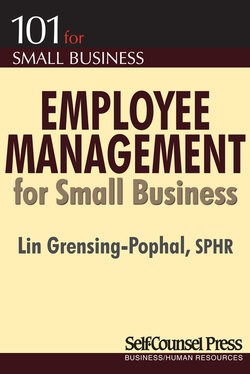Читать книгу Employee Management for Small Business - Lin Grensing-Pophal - Страница 51
На сайте Литреса книга снята с продажи.
3. Guidelines in Canada
ОглавлениеEvery jurisdiction in Canada has legislation designed to ensure equality for its people. These statutes have their origin in the 1948 Universal Declaration of Human Rights (UDHR) of the United Nations. All jurisdictions express opposition to discrimination on the basis of race, nationality, ethnic origin or place of origin, color, religion or creed, marital status, or sex.
The authority to enact laws in Canada is divided between the provincial and the federal governments. The laws enacted by the federal government are contained in the Canada Labour Code and apply mainly to employees of federal Crown corporations and federally regulated areas, including the following:
• Works or undertakings in connecting a province with another province or country, such as railways, bus operations, trucking, pipelines, ferries, tunnels, bridges, canals, and telegraph and cable systems.
• All extra-provincial shipping and services connected with such shipping (e.g., longshoring and stevedoring).
• Air transport, aircraft, and airdromes.
• Radio and television broadcasting.
• Banks.
• Defined operations of specific works that have been declared to be for the general advantage of Canada or of two or more provinces, such as flour, feed and seed cleaning mills, feed warehouses, grain elevators, and uranium mining and processing.
• Most federal Crown corporations (e.g., the Canadian Broadcasting Corporation and the St. Lawrence Seaway Authority).
Because laws and regulations vary by province, it is important to check the regulations that apply in your area. A useful resource available online is the Human Resources and Skills Development Canada home page: www.hrsdc.gc.ca.
